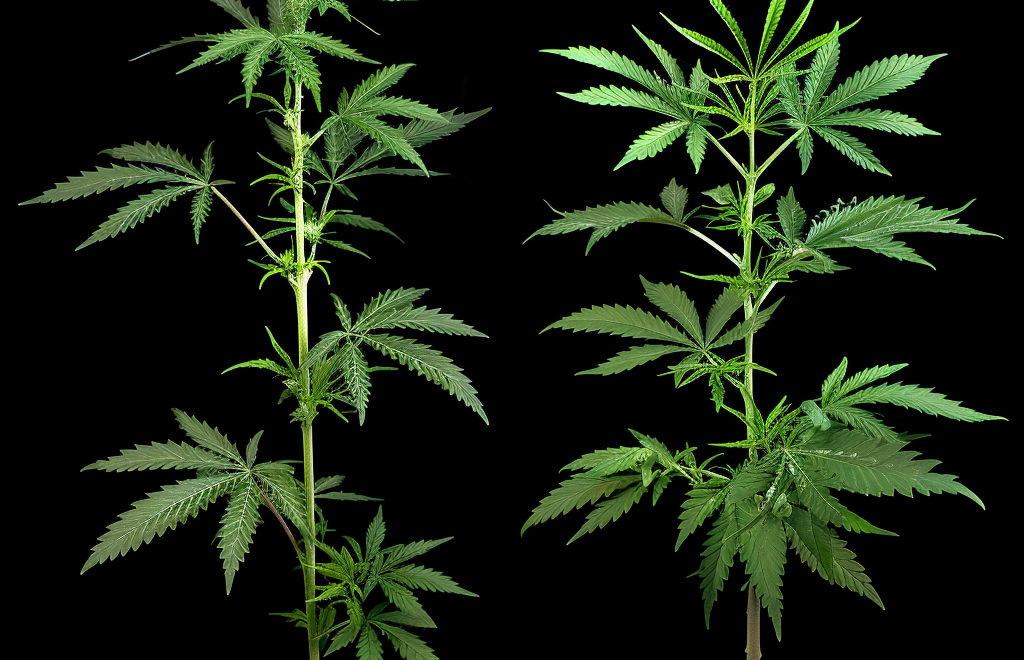Cannabis, commonly known as marijuana, comes in various strains, each with its own unique characteristics. Among the most notable distinctions are indica and sativa strains. Understanding the differences between these two types of cannabis plants is essential for consumers and growers alike. Additionally, the emergence of hybrids adds another layer of complexity to the cannabis landscape.
Indica vs. Sativa: Origins and Characteristics
Indica and sativa are two primary species of the cannabis plant, each originating from different geographical regions and exhibiting distinct physical and chemical traits.
Indica:
- Origins: Indica plants are native to the Hindu Kush mountain range in Central Asia, particularly in countries like Afghanistan, Pakistan, and India.
- Characteristics: Indica plants are typically shorter and bushier compared to sativa plants, with broader leaves and denser buds. They are known for their relaxing and sedative effects, making them popular choices for evening or nighttime use. Indica strains often have higher levels of CBD (cannabidiol) relative to THC (tetrahydrocannabinol).
Sativa:
- Origins: Sativa plants originated in equatorial regions such as Southeast Asia, Central America, and Africa.
- Characteristics: Sativa plants are taller and more slender with narrower leaves compared to indica plants. They tend to produce more uplifting and energizing effects, making them suitable for daytime consumption. Sativa strains typically have higher levels of THC relative to CBD.
Hybrids: Blending the Best of Both Worlds
As cannabis cultivation has evolved, breeders have developed hybrid strains by crossbreeding indica and sativa plants. Hybrids are created to combine the desirable traits of both parent strains, resulting in a wide range of effects and flavors.
- Common Effects: Hybrids can offer a balanced combination of indica’s relaxing effects and sativa’s uplifting properties. Depending on the specific hybrid, consumers may experience a mix of physical and mental effects, such as euphoria, relaxation, creativity, and pain relief.
- Grow Times and Harvests: The growth characteristics and harvest times of hybrid strains can vary depending on their genetic makeup. Some hybrids may lean more towards the indica side, resulting in shorter flowering times and higher yields, while others may exhibit more sativa-like traits, requiring longer flowering periods and producing smaller yields.
Exploring the World of Cannabis Strains
Within the categories of indica, sativa, and hybrids, there are thousands of different cannabis strains, each with its own unique combination of cannabinoids, terpenes, and other compounds. These variations contribute to the diverse array of effects, flavors, and aromas found in different strains.
- Terpenes: Terpenes are aromatic compounds found in cannabis and other plants that contribute to their distinct scents and flavors. Each strain contains a unique blend of terpenes, which can influence its effects and medicinal properties. Common terpenes found in cannabis include myrcene, limonene, and pinene.
- Cannabinoid Profiles: In addition to THC and CBD, cannabis strains may contain other cannabinoids such as CBN (cannabinol), CBG (cannabigerol), and THCV (tetrahydrocannabivarin). The varying ratios of these cannabinoids can impact the overall effects of a strain, such as its potency, sedative effects, and therapeutic potential.
In conclusion, understanding the differences between indica and sativa cannabis plants, as well as the wide variety of hybrid strains available, is crucial for both consumers and cultivators. Whether seeking relaxation, stimulation, pain relief, or other medicinal benefits, exploring different strains allows individuals to find the perfect cannabis experience tailored to their needs and preferences. With thousands of variations to choose from, the world of cannabis offers something for everyone to explore and enjoy responsibly.

